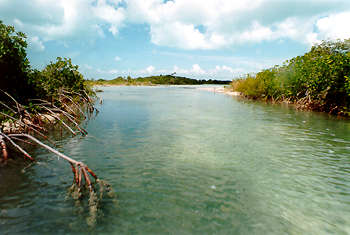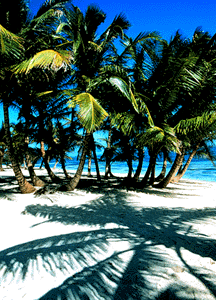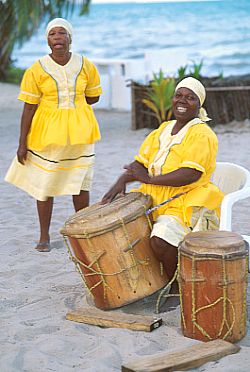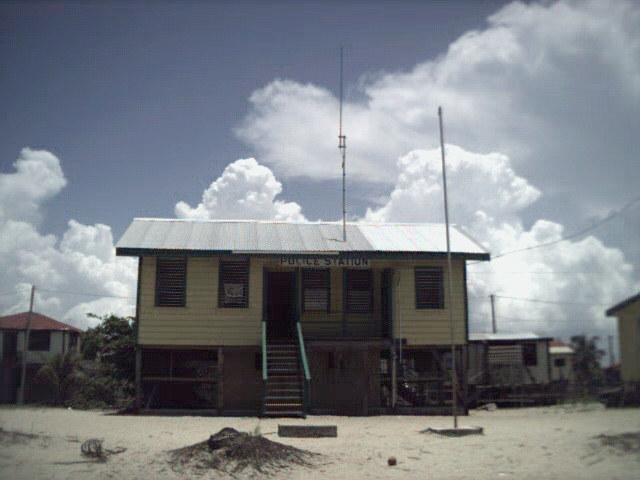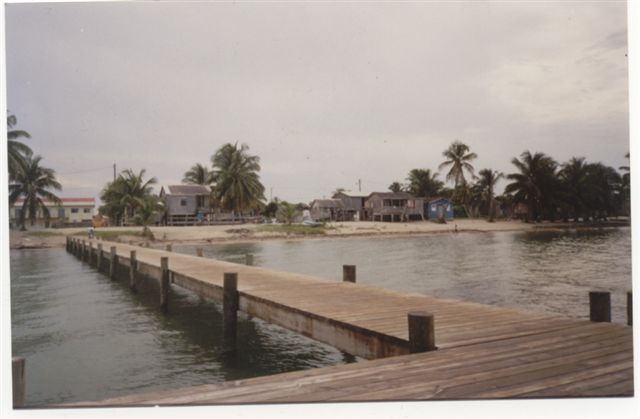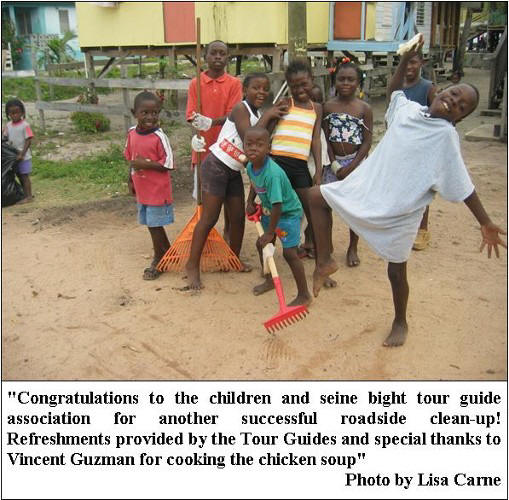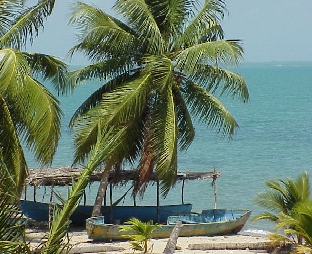The peninsula is not very wide, perhaps a quarter mile wide at the widest point just North of Seine Bight. The vegetation varies from Coastal plants : Coconuts, Sea Grape, Coco Plum, Cashew and Mango trees along the beach to the Red Mangrove along the Lagoon's edge. In between there is coastal scrub forest with small Oak trees and other deciduous trees, and in the wetter areas are Palmetto stands.
There are many animals on the peninsula from birds to small mammals. The mammals range from The Gray Fox and Raccoon to the small Yucatan Squirrel and Opossum. There have been over 85 species of birds observed on the Peninsula. Watch in the trees for Iguanas, False Iguanas, and the curious Basilisk lizards. Near many of the houses are small Gecko lizards and Tree frogs.
The history of humans living on the peninsula ranges back to at least 500 AD. when the Maya used the sheltered water of the Lagoon for coastal shipping and to produce salt for trade. This was followed by a colony of Puritan Protestants. The fishing village of Point Placencia and Seine Bight, as we now know them, were settled in the early to mid 19th century.
The name Rum Point appears on early charts of Belize. It is believed that the name arose due to the desire of some of the early settlers of Point Placencia to escape the rigors of Puritan Protestantism. To this day small pieces of English clay pipes as well as rum and wine bottles from that era surface on the shallow sea bottom in front of Rum Point Inn, thus making it a historical site. Some of these artifacts are currently on display in the bar.
WELCOME TO SEINE BIGHT.COM |
